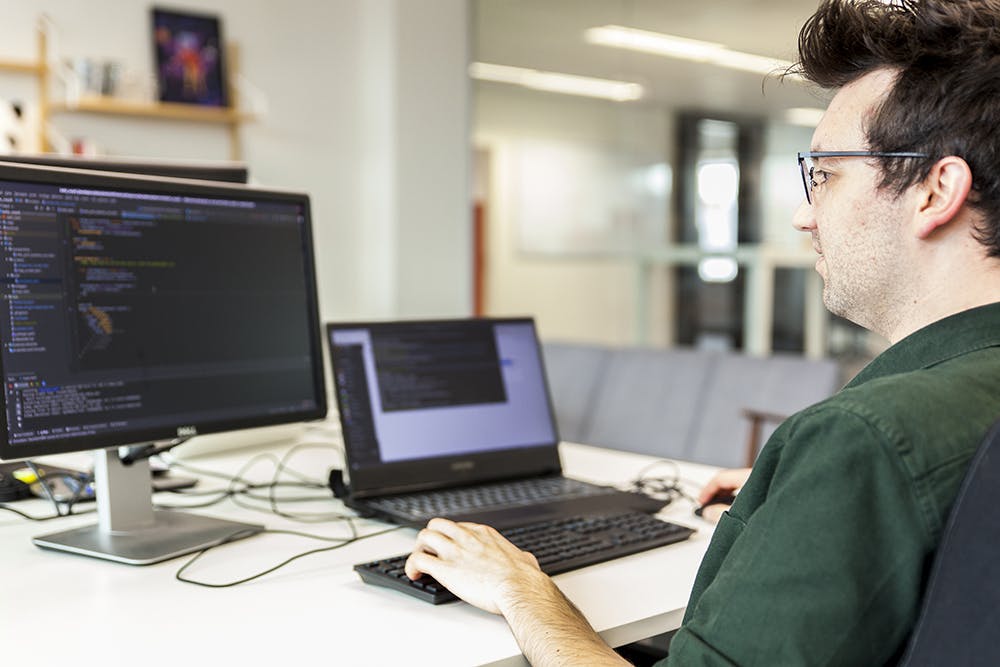
In this blog
In this blog, we talk about:
- The essence of a CMS, explaining the fundamental concept and functionality that allows website owners and content managers to manage content.
- The myriad of strengths that a CMS brings to the table.
- The difference between traditional and headless.
- The importance of cybersecurity.
Are you ready? Because we are!
The Essence of a CMS: Easy and Efficient Content Management
The strength of a CMS lies in its ability to make content management simple and efficient. Thanks to an intuitive user interface, even people with no technical background can manage and publish content without any difficulty. Easy peasy.
A CMS provides you with standardised tools and templates that allow users to create new pages, edit existing content and add multimedia, without having to worry about complex technical aspects of your website.
The efficiencies that a CMS brings save you time as a content manager and minimise errors. Instead of making every change manually, changes are made consistently across your entire website with the help of your CMS.
Returning to a previous version of your website? No problem. A CMS offers that too. Publication options allow you to draft and schedule articles and promotions in advance, reducing last-minute updates and publications and making your workflow more streamlined.
The Strengths of a CMS
If you choose to work with a CMS, team-based content management becomes a breeze. You can work on different tasks together with your colleagues simultaneously. Wherever you are, at whatever time. Each working on the same content at a totally different time? No problem!
A CMS also offers numerous advantages when integrating e-commerce functionalities. The user-friendly interface allows people to access information, images, ... without any technical background. A lot of CMS platforms offer specific e-commerce plug-ins and extensions that integrate seamlessly.
Last but certainly not least: a Content Management System is essential in facilitating cross-platform content management. You notice this especially with a headless CMS. Such a system provides access to content across multiple platforms, be it websites, apps, web platforms, etc.
Traditional VS. Headless
Anyone talking about a Content Management System almost immediately raises one pressing question. What is the difference between a traditional CMS and a headless CMS?
With a traditional CMS, think Wordpress or Webflow, the frontend is directly linked to the backend. Frontend in this instance is the visible part of your website, while the backend is the part where you manage the content.
A traditional CMS is easy to use, but their built-in structure and design are often limiting for developers who want full control over the front-end experience.
In contrast, a headless CMS, think Strapi, offers a more decentralised approach. The word in fact says it all. Here, your frontend and backend are separate, with an Application Programming Interface (API) in between. You manage and store your content in the CMS, but that is then sent to the frontend of your website via that API. Are you still with us?
A headless CMS gives developers complete freedom to design that frontend to their liking. This allows for more flexibility in creating custom and advanced user experiences.
Global Reach Made Easy: Embrace Multilingual Content
A CMS allows you to easily offer your website in different languages to serve your entire target audience. The system provides tools and functionalities that make the translation process easier, such as duplicating pages and offering language selection menus to your visitor.
In addition, a CMS ensures streamlined management of your multilingual content, so updates and changes are automatically applied to all versions. Not only does this save you time and effort, but it also ensures that your content remains consistent across all versions. Say hello to that professional appearance and better user experience.
What About Security?
Websites are often targeted by hackers and cybercriminals. Fortunately, a lot of CMS platforms have robust security measures built in to protect your website from any threats. But, remember, it is essential to always install the latest updates and security patches to your CMS to plug any vulnerabilities and protect your website even better.
Of course, the security of your website is not solely in the hands of your CMS. As with your personal accounts, it is also important to be careful about a number of things yourself. Use strong passwords and assign roles wisely to trustworthy people. Make backups of your website, which, in case of an incident, can help you recover your website. By being proactive with your website and CMS, you can minimise risks and maintain the integrity of your website and data.